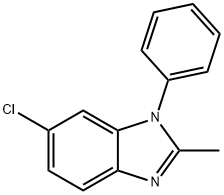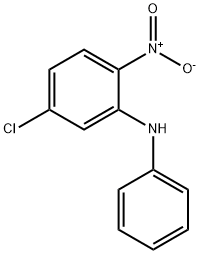
6-chloro-2-methyl-1-phenyl-1H-benzimidazole synthesis
- Product Name:6-chloro-2-methyl-1-phenyl-1H-benzimidazole
- CAS Number:51011-13-3
- Molecular formula:C14H11ClN2
- Molecular Weight:242.7
Yield:51011-13-3 95 %Chromat.
Reaction Conditions:
with Pt-TiO2 at 32; for 4 h;UV-irradiation;Inert atmosphere;
Steps:
The photocatalytic and catalytic synthesis was carried out using the following procedure. Appropriate amounts of catalyst and 2-nitrodiphenylamine or 2-aminodiphenylamine in 25 mL of alcohol were taken in a reaction tube. The reaction tube was sealed with a rubber septum and purged with nitrogen for 30 min. The reaction mixture was irradiated with UV (365 nm) medium-pressure mercury lamp (Sankyo Denki, Japan; intensity I = 1.381 × 10-6 einstein L-1 s-1)/ solar light at constant stirring. The temperature of the reaction medium during UV irradiation was 32 °C and it was nearly constant. With solar light, the temperature of the solution changed gradually from 32 to 48 °C for all the experiments. The progress of the reaction was monitored using thin layer chromatography (TLC). Product analysis was performed by GC analysis, Perkin-Elmer GC-9000 with a capillary column of DB-5 and flame ionization detector was used. GC-MS analysis was carried out using Varian 2000 Thermo with the following features: capillary column VF5MS (5% phenyl-95% methylpolysiloxane), 30 m length, 0.25 mm internal diameter, 0.25 μm film thickness, temperature of column range from 50-280 °C (10 °C/min) and injector temperature 250 °C, attached with mass spectrometer model SSQ 7000. The isolation was performed by column chromatography on a silica gel column by eluting with a co-solvent of dichloromethane and methanol (volume ratio: 8:2). For solar experiments, all reactions have been carried out under similar conditions on sunny days of different months of 2008-2009 between 10 A.M. and 2 P.M. The intensity of solar light was measured using a LT Lutron LX-10/A digital Lux meter and it was found to be 1250 × 100 (+/-100) lux. The intensity was nearly constant during the experiments.
References:
Selvam;Swaminathan [Tetrahedron Letters,2011,vol. 52,# 26,p. 3386 - 3392] Location in patent:experimental part






